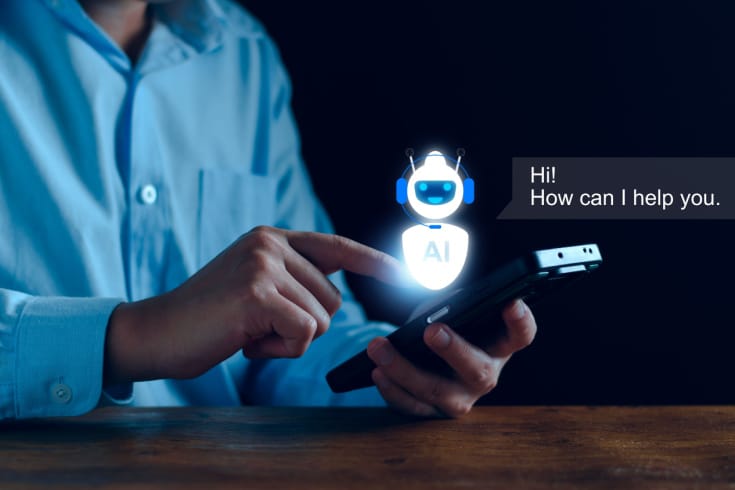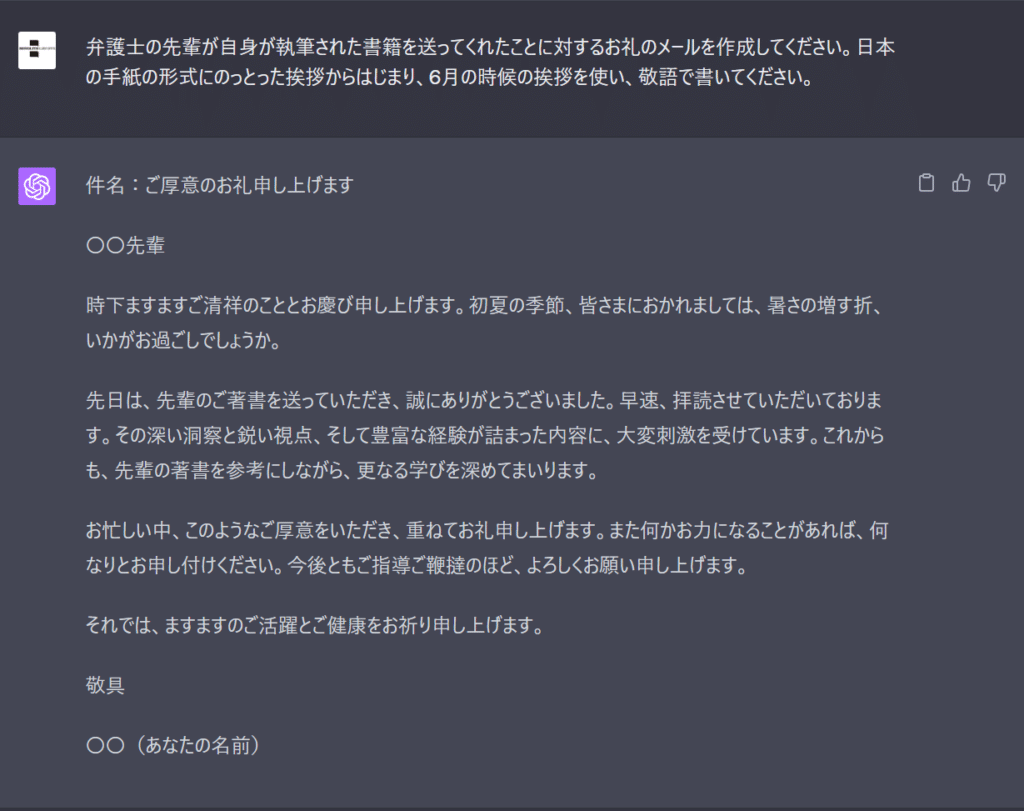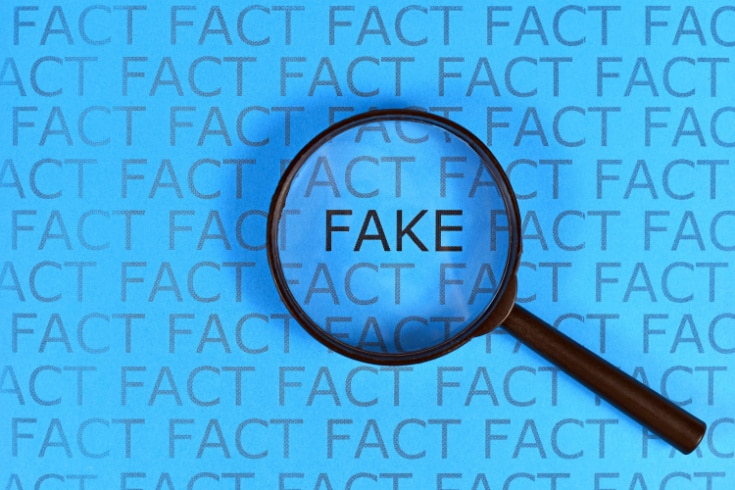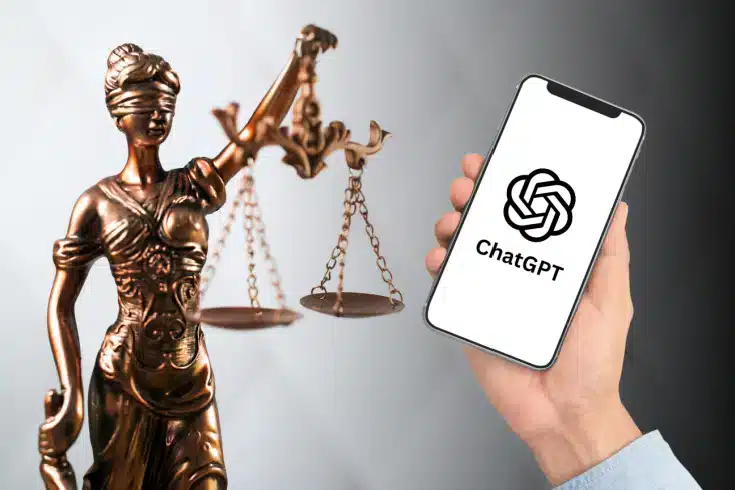Is it Possible to Use ChatGPT for Business? Explaining the Advantages and Considerations

In recent years, the evolution of AI technology has been remarkable, especially in the field of Natural Language Processing (NLP) developing rapidly. In particular, the presence of generative AI with advanced natural language processing capabilities, known as ‘ChatGPT’, is attracting attention.
As the demand for business efficiency and cost reduction increases among companies, there is a growing call for the utilization of AI in business operations. However, there are risks such as the leakage of confidential information and copyright issues, and some companies prohibit the use of ChatGPT.
In this article, we will provide a detailed explanation of the potential use of ChatGPT in business, its benefits, and points to be aware of.
Is it possible to use ChatGPT for business?

ChatGPT is a natural language generation model developed by OpenAI. It can generate appropriate responses to the sentences input by users. This chatbot is built based on OpenAI’s large language model (LLM), GPT-4, and its predecessors. The initial demo of ChatGPT was released on November 30, 2022, and it quickly became a topic of discussion on social media.
GPT stands for Generative Pre-Trained Transformer, and the first version was released in 2018. This model is based on a new technology in neural networks called Transformer technology. Subsequently, in 2019, a more powerful GPT-2 was released. This model was trained on a large dataset consisting of about 40GB of text and has 1.5 billion parameters.
ChatGPT can be used in various business operations of companies. For example, it can handle various tasks such as customer support, automatic responses to FAQs, and document creation. It can also support multiple languages, making it suitable for international business.
However, the reality is that there are not many companies that are actively incorporating ChatGPT into their operations. The main reason is that introducing AI into business requires proper data preparation, project management, understanding of usage methods, and awareness of potential risks. Proper preparation and understanding are necessary to use ChatGPT for business.
Examples of Using ChatGPT in Business
ChatGPT has been adopted for use in various industries. For example, it is used in customer support, content creation, and automatic translation. In this article, we will introduce specific examples of how ChatGPT is used in business.
Customer Support
ChatGPT is already widely used in the field of customer support, such as inquiry desks. Utilizing natural language processing technology, ChatGPT can automatically respond to customer inquiries.
ChatGPT can provide support in multiple languages. It can handle various languages and translate messages in real time. As a result, companies can now cater to global customers¹.
Furthermore, ChatGPT can also perform sentiment analysis. Sentiment analysis is used as a means to resolve issues when customers have complaints or dissatisfaction. ChatGPT is trained to recognize various emotions such as happiness, sadness, anger, and frustration. When a customer sends a message, ChatGPT analyzes the message to determine the emotion and can also provide a response tailored to the customer’s emotional state.
Content Creation for Documents and Materials
ChatGPT is a natural language processing model built by learning a large amount of text data, and it can understand and generate sentences with high accuracy. As a result, ChatGPT has the ability to generate natural sentences and provide appropriate sentences according to user requests.
- Creating blog articles and news articles: ChatGPT can generate new sentences based on keywords or topics entered by the user. This allows users to create high-quality blog articles and news articles in a short amount of time.
- Creating emails and letters: ChatGPT can generate sentences for emails and letters. Users can receive appropriate sentences by entering information such as the recipient and purpose.

Marketing Tasks such as Market Research
ChatGPT can also be used for marketing tasks such as market research. For example, the following methods can be mentioned.
- Data analysis and visualization: ChatGPT can analyze a large amount of data and visualize the results. This allows users to easily understand the results of market research.
- Creating reports and presentations: ChatGPT can generate sentences for reports and presentations based on the results of market research. This allows users to create high-quality reports and presentations in a short amount of time.
- Extracting keywords and trends: ChatGPT can extract keywords and trends from a large amount of data. This allows users to easily grasp market trends.
Translation
By utilizing ChatGPT, multilingual support can be provided for various languages. ChatGPT can understand multiple languages, regardless of the language in which the customer is conversing. This is particularly useful for businesses with multilingual customers, as it removes language barriers and facilitates communication with customers.
However, human intervention may be necessary to fully understand the context and nuances of translation. AI can generate literal translations, but there are limits to its deep understanding of specific expressions and idioms. Therefore, it is recommended that translations generated by ChatGPT be checked by humans and corrected as necessary.
Summarizing Documents
ChatGPT can also be used to summarize long text documents. This AI, with its natural language processing (NLP) capabilities, can extract the main points of the text and concisely summarize them.
Summaries by ChatGPT are useful for various types of long text documents, such as reports, articles, books, and research papers. However, to ensure sufficient quality and accuracy of the summary, human verification and editing may be necessary. Since AI cannot fully understand the intent and nuances of the original text, it is recommended that the results of the summary be checked by humans and corrected as necessary.
Creating Programming Languages
ChatGPT can also be used to support the creation of programming. The following uses are anticipated.
- Code generation: ChatGPT can generate code based on specified requirements. For example, it can generate appropriate code snippets in response to requests like “Generate code to calculate the squares of numbers from 1 to 100 using list comprehension in Python.”
- Code explanation: ChatGPT can also explain what a specific code snippet does. This is particularly useful when learning a new programming language or trying to understand a complex codebase.
- Problem-solving assistance: ChatGPT can provide suggestions to solve problems related to code. For example, it can explain error messages, point out parts of the code that may have bugs, and suggest corrections.
- Code review: ChatGPT can make suggestions to improve the quality of code. This may include improving code readability, optimizing performance, or applying best practices.
However, since it does not always provide completely accurate results in all situations, the output of ChatGPT should be considered as one of the references, and humans should check and evaluate the final quality and accuracy of the code.
Benefits of Using ChatGPT in Business

Utilizing ChatGPT in business provides a significant opportunity to streamline business processes, improve productivity, and cater to a wider range of customer needs. In this article, we will delve into the benefits of using ChatGPT in business.
Efficiency in Operations
Using ChatGPT in business can enhance efficiency in various ways. Here are some specific examples:
- Automating customer support: ChatGPT has the ability to automatically respond to customer inquiries. This can significantly reduce the response time for basic inquiries and lighten the load on the customer support team.
- Creating documentation and reports: ChatGPT excels in text generation. This ability can be used to streamline the creation of standard documents and reports.
- Improving internal communication: By integrating it into internal chat tools, it can facilitate communication between employees and aid in information sharing.
- Education and training: ChatGPT can also be used as an educational tool for learning new skills and knowledge.
However, it is important to pay attention to data privacy, security, and legal regulations when actually using it.
Potential to Reduce Personnel Costs
The introduction of ChatGPT can potentially lead to significant reductions in personnel costs. By using AI, tasks that previously required human intervention can be automated, allowing companies to allocate their staff to other more important tasks.
For example, if ChatGPT is used as a chatbot for customer support, companies can provide 24/7 support while reducing customer support staff or reallocating them to other important tasks.
In tasks such as market research, strategy formulation, and SNS marketing, ChatGPT supports analysis, strategy proposals, and content creation. This allows the marketing team to focus more on strategic tasks, reducing personnel costs while improving the quality of work.
Ability to Collect Information Using Big Data
Big data refers to a collection of data so large and complex that it is difficult to process with conventional databases and software tools. By utilizing big data, you can extract information necessary for decision-making and make highly accurate predictions.
ChatGPT is a large-scale artificial intelligence trained by OpenAI, and a vast amount of text information on the Internet was used for its training. Therefore, ChatGPT can provide information on various themes and functions as a wide-ranging and detailed source of information.
With ChatGPT, you can quickly search for information on specific questions or topics, summarize that information, and provide it to users. This can significantly reduce the time and effort users spend on individually searching, reading, and understanding a large amount of information.
Points to Note When Using ChatGPT for Business
Utilizing ChatGPT can significantly improve business efficiency, and its potential is vast. However, when using ChatGPT for business, it is necessary to understand several important points and use it appropriately.
Risk of Confidential Information Leakage
OpenAI’s ChatGPT does not have the ability to permanently remember or share the information entered by users. This is to respect user privacy and ensure data security.
Nevertheless, it is advisable to avoid inputting confidential information or personally identifiable information into the AI. There is a possibility that this information may be output in an inappropriate form to other users while the AI temporarily retains the information. Also, the system is not completely immune to hacking.
Considering these risks, companies should pay close attention to the handling of confidential information. Specifically, measures such as not revealing personal or company confidential information during conversations with ChatGPT, or adequately protecting the entire system, including conversations with AI, should be considered.
The Information Obtained May Lack Credibility

ChatGPT is an artificial intelligence, and its output is generated based on patterns learned from training data. Therefore, the credibility of its information largely depends on the quality of the training data. If the training data is incomplete or contains incorrect information, ChatGPT may also output incorrect information.
Furthermore, ChatGPT has the nature of learning and reproducing human language patterns rather than “understanding” information. Therefore, it does not automatically fact-check or update information. For example, ChatGPT may output old information based on its training data.
For these reasons, it is necessary to carefully evaluate the credibility of the information obtained from ChatGPT. Especially when making important decisions or in situations where accuracy and credibility are required, humans should perform the final confirmation and verification of the information. This is a basic point to keep in mind when utilizing AI, and should always be remembered when using ChatGPT for business.
There May Be a Possibility of Not Obtaining Timely Information
ChatGPT is trained based on a large amount of text data, and its knowledge is as of the point when the training data was collected. Even the latest model of ChatGPT (as of writing, GPT-4), its training data is up to September 2021, and it does not have knowledge about specific events, occurrences, or information after that. Therefore, the information provided by ChatGPT is based on information prior to September 2021.
This is particularly important in fields where changes are rapid or the latest information is crucial. For example, science and technology, policy, and market trends change daily, and new discoveries and changes are frequently made. In such fields, the information provided by ChatGPT may not reflect the latest situation.
Therefore, when utilizing ChatGPT, it is important to check whether the information is timely and to use appropriate information sources in situations where the latest information is needed. ChatGPT is just one tool, and the use of its information should be done at the user’s own discretion and responsibility.
There May Be a Risk of Infringing on Others’ Copyrights
Since ChatGPT is generated by learning a large amount of text on the internet, the output content does not directly copy information from specific copyrighted works. Therefore, in principle, there is no issue of copyright infringement in the text generated by ChatGPT.
However, if the text generated by ChatGPT is very similar to existing copyrighted works, there may be a risk of copyright infringement. For example, if you give ChatGPT a prompt that strongly reflects a specific work or copyrighted material, it may produce content similar to the original work. Unauthorized reproduction, distribution, and public transmission of others’ copyrighted works constitute copyright infringement. Therefore, when generating content using ChatGPT, care must be taken not to infringe on others’ copyrights.
To avoid legal issues, it is important to check whether the generated content is similar to others’ copyrighted works or infringes on others’ copyrights. If necessary, it is recommended to consult with experts such as lawyers.
Companies Prohibiting the Use of ChatGPT for Business Purposes
While some corporations and local governments have declared their active use of ChatGPT in their operations, others in certain industries have completely banned or restricted the use of external AI models like ChatGPT due to concerns over security and the risk of information leakage.
Specific examples include industries such as financial institutions and law firms. In these industries, the protection of personal and confidential information is highly prioritized, and there are many cases where caution is exercised when using external AI models or cloud services.
Summary: There are various risks associated with using ChatGPT for business purposes
In this article, we have discussed whether it is possible to use ChatGPT for business purposes, while considering various ways to utilize it.
While proper use of ChatGPT can significantly improve business efficiency, there are also risks such as leakage of personal and confidential information, and infringement of copyright. When using ChatGPT for business, it is necessary to understand these risks and use it appropriately. In particular, we recommend consulting with a lawyer regarding legal risks and the company’s crisis management system.
Category: IT





















